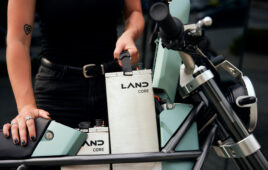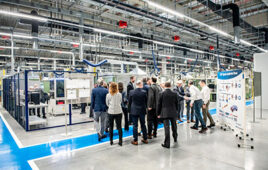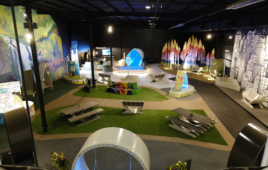You may be thinking green in your manufacturing processes, but what about when it’s time to ship prototypes, parts or finished items to other team members or potential customers? Each year, $15 billion worth of corrugated fiberboard is sold in the U.S., generating more than 24 million tons of waste. Pelican Products, a manufacturer of high-impact, damage resistant protector cases, has emerged with an environmentally friendly, repeat-use, shipping solution.
The company’s cases recently solved some major problems for the product trial and trade show sample department at a Fortune 500 consumer electronics company. The manufacturer realized that they needed a more cost effective, robust and environmentally responsible method of shipping their delicate computer components:
• The expendable packaging the company was using had become extremely expensive because of its short life span and the substantial labor costs associated with building and packing these boxes. In some U.S. cities, the disposal cost of corrugated can be as high as the cost of purchasing it.
• Expendable packaging was not only expensive; it offered poor protection from impact and the elements, exposing sensitive equipment to unnecessary damages. As a result,some of their sample units were being damaged in transit.
• Pelican proposed a range of customized solutions to decrease their packaging costs, reduce the amount of shipping-related damages and eliminate the waste that expendable packaging creates.
The watertight and crushproof construction of the Pelican protector case ensures that sensitive equipment stays protected over the course of repeated trips. Constructed of a propriety blend of polymers, both the cases and the inserts can be customized to handle delicate products in a variety of sizes. A range of standard sizes is also offered.

Obviously, a Pelican case is heavier than a cardboard box and as a result there is a difference in shipping costs. But according to the company, there are three factors accounted for in calculating packaging cost reduction:
1. Eliminating recurring charges for expendable packaging (corrugated, styrofoam, etc.). The average expendable package only lasts for one to three trips.
2. Dramatically reducing non-value added labor costs (set-up and breakdown) and the disposal fees associated with expendable packaging.
3. Amortizing the cost of a Repeat-Use packaging solution over the life of the case.
In a comparative study, one Pelican case solution (1450 model with custom foam) paid for itself after a mere three trips. For the more substantial packaging needs, the company customized their 0370 Cube case, which was able to pay for itself in a little over 20 trips.
Pelican also practices what it preaches in its own manufacturing facility. The plant is phasing in a host of high-efficiency, utility-company-audited equipment, including:
• Electric molding machines that save 30% more energy than a comparable conventional hydraulic molding machine
• High efficiency chillers with pumps that run on an as-needed basis instead of working constantly
• High efficiency air compressors for less energy consumption
The company has replaced lighting in their plant with T8 high efficiency lighting, which lowered the company’s annual energy consumption by 6%. In all, they have cut overall annual energy consumption by 13% with the replacement of old equipment with new high-efficiency models. And for the occasional rejected case that doesn’t meet manufacturing specs? Pelican reduces waste by grinding all rejected cases and recycling the material for use in future products.
Pelican Products Inc.
www.pelican.com
::Design World::
Filed Under: Green engineering • renewable energy • sustainability, Packaging





Tell Us What You Think!